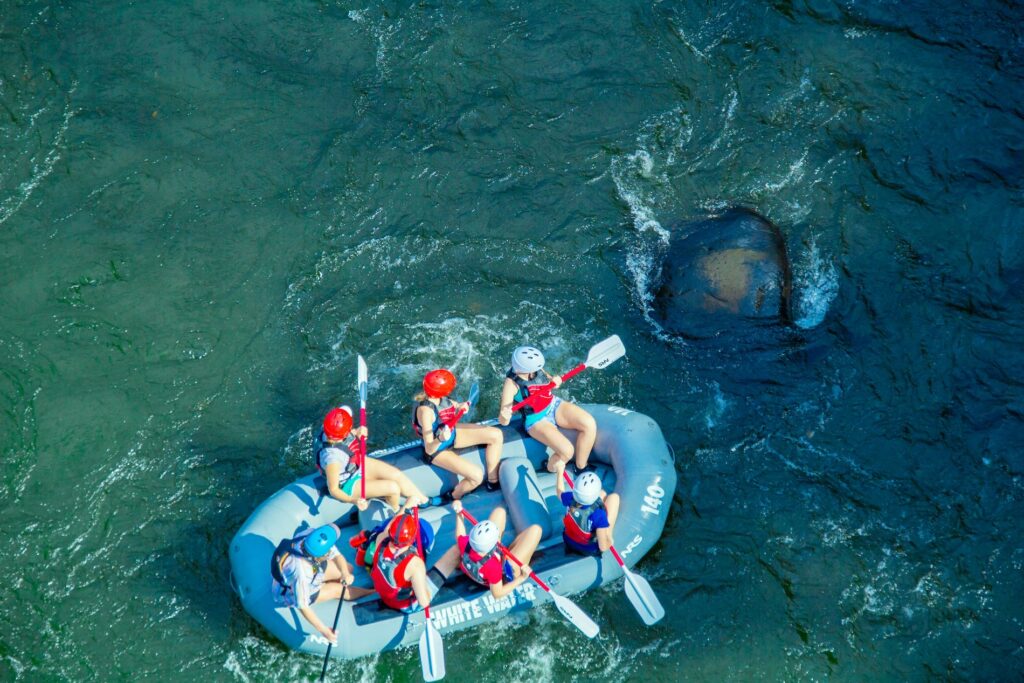Introduction
In the realm of sports, success is often not solely determined by individual talent but by the collective efforts of a cohesive team. The dynamics of team characteristics play a pivotal role in shaping the performance and outcomes of sporting events. Understanding these dynamics is crucial for coaches, athletes, and sports psychologists seeking to maximize team potential and achieve success on the field. This literature review aims to delve into the multifaceted aspects of team characteristics in a sporting context, shedding light on the elements that foster cohesion and synergy within a team.
A strong team is paramount in sports for several reasons, each contributing to the overall success and performance of the team:
- Collective Skill Utilization: In sports, individual talent can only take a team so far. A strong team allows for the collective utilization of diverse skills and abilities. Different players bring unique strengths to the table, whether it be speed, agility, strength, or tactical acumen. When these skills are combined and coordinated effectively, the team becomes greater than the sum of its parts, enabling them to outperform opponents.
- Synergy and Cohesion: A cohesive team operates like a well-oiled machine, with each member understanding their role and working seamlessly together towards common goals. Strong teams have a high level of synergy, where players anticipate each other’s movements, communicate effectively, and support one another both on and off the field. This cohesion fosters a sense of unity and camaraderie, which can be a powerful motivator during competitions.
- Resilience and Adaptability: Sports are inherently unpredictable, with matches often presenting unforeseen challenges and obstacles. A strong team is resilient in the face of adversity, able to bounce back from setbacks and maintain focus under pressure. Moreover, strong teams possess the ability to adapt their strategies and tactics on the fly, responding to changing game dynamics and exploiting opponents’ weaknesses.
- Psychological Advantage: Confidence and belief are crucial components of success in sports. A strong team cultivates a winning mentality, instilling belief in their ability to overcome any obstacle and emerge victorious. This psychological advantage can be a decisive factor in close contests, giving the team the edge needed to secure victory.
- Long-term Success: Building a strong team is not just about short-term gains but also about laying the foundation for sustained success. Strong teams invest in player development, team cohesion, and strategic planning, positioning themselves for long-term competitiveness and excellence. Consistency in performance and results is a hallmark of strong teams, earning them respect and admiration within their sport.
Defining Team Characteristics
Team characteristics encompass a wide array of factors that collectively contribute to the functioning and performance of a sports team. These include communication patterns, leadership styles, levels of trust among team members, clarity of roles and responsibilities, and the overall level of group cohesion. Each of these elements interacts with one another to create a unique team dynamic that can either propel the team towards success or impede its progress.
Communication: The Backbone of Team Dynamics
Effective communication serves as the cornerstone of successful teamwork in sports. It involves not only the transmission of information but also the active exchange of ideas, feedback, and support among team members. In the fast-paced and dynamic environment of sports, clear and open channels of communication are essential for ensuring coordination, synchronization, and decision-making during gameplay.
Importance of Effective Communication
In sports, where split-second decisions can determine the outcome of a game, effective communication can mean the difference between victory and defeat. Research conducted by Harvard Business Review emphasizes the importance of establishing a shared understanding of communication norms and expectations within a team. When team members are able to communicate effectively, they can convey their intentions, strategies, and needs with clarity and precision, reducing the likelihood of misunderstandings or errors on the field.
Enhancing Team Performance
Effective communication not only facilitates the exchange of information but also enhances team performance in several ways. It promotes a sense of unity and cohesion among team members, fostering a supportive and collaborative team environment. When team members feel heard and valued, they are more likely to contribute their ideas and insights, leading to innovative solutions and strategies. Moreover, communication enables teams to adapt and adjust their tactics in real-time, based on the evolving dynamics of the game.
Strategies for Improving Communication
Coaches and team leaders play a crucial role in fostering effective communication within a team. They can establish clear communication protocols, such as regular team meetings or designated communication channels, to ensure that information flows freely among team members. Additionally, they can provide training and guidance on active listening, conflict resolution, and constructive feedback, equipping team members with the skills they need to communicate effectively under pressure.
Leadership: Guiding the Way to Success
Leadership is a cornerstone of team dynamics in sports, playing a crucial role in shaping team culture, morale, and performance. A strong and effective leader provides direction, motivation, and inspiration to team members, guiding them towards common goals and objectives. In the fast-paced and high-pressure environment of sports, effective leadership is essential for maximizing team potential and achieving success on the field.
Importance of Effective Leadership

In sports, where individual talent must be harnessed and aligned towards collective goals, effective leadership can make all the difference. Research published in The Leadership Quarterly underscores the significance of leadership styles in influencing team cohesion and performance. Transformational leadership, characterized by vision, inspiration, and empowerment, has been shown to have a particularly positive impact on team dynamics, fostering a sense of trust, collaboration, and commitment among team members.
Roles and Responsibilities of a Sports Leader
A sports leader fulfills a multitude of roles and responsibilities, each geared towards maximizing team performance and achieving success. Firstly, they provide clear direction and guidance, setting strategic objectives and defining expectations for team members. Additionally, they serve as role models, embodying the values of dedication, resilience, and teamwork that are essential for success in sports. Moreover, they act as motivators, inspiring and empowering team members to give their best effort and persevere through challenges.
Building Trust and Cohesion
One of the key functions of leadership in sports is to build and maintain trust among team members. Trust forms the foundation of effective teamwork, enabling open communication, collaboration, and mutual support. A leader earns the trust of their team by demonstrating integrity, competence, and consistency in their actions and decisions. By fostering a culture of trust and transparency, leaders create a supportive and cohesive team environment where individuals feel valued and empowered to contribute their best.
Developing Leadership Skills
Effective leadership is not innate; it can be developed and cultivated through training, experience, and self-reflection. Coaches and organizations can invest in leadership development programs to help aspiring leaders hone their skills in communication, decision-making, conflict resolution, and emotional intelligence. By providing opportunities for leadership roles and responsibilities within the team, coaches can empower emerging leaders to grow and flourish, ultimately strengthening the team as a whole.
Trust: Building Bonds of Reliability
Trust is the foundation upon which successful teams are built. When team members trust one another, they are more likely to communicate openly, collaborate effectively, and support each other during times of adversity. Trust also fosters a sense of psychological safety within the team, allowing members to take risks and innovate without fear of judgment or reprisal. Research in the Journal of Sport & Exercise Psychology suggests that trust is closely linked to team cohesion and performance, highlighting its importance in creating a positive team environment.

Roles: Clarifying Expectations and Responsibilities
Clear roles and responsibilities are essential for ensuring smooth teamwork and coordination within a sports team. When each team member understands their role and contribution to the team’s objectives, it minimizes confusion and conflict, allowing for more effective collaboration. Additionally, clearly defined roles enable team members to leverage their individual strengths and skills, maximizing overall team performance. Literature from the field of Sport Psychology emphasizes the importance of role clarity in optimizing team dynamics and promoting a sense of belonging and accountability among team members.
Group Cohesion: The Glue That Binds
Group cohesion refers to the degree of unity, solidarity, and mutual support among team members. A cohesive team shares a common purpose, values, and goals, which fosters a sense of belonging and commitment among its members. Research conducted in The Sport Psychologist suggests that group cohesion is a strong predictor of team success, as it enhances communication, coordination, and morale within the team. Strategies such as team-building activities, shared experiences, and collective goal-setting can help foster a sense of cohesion and camaraderie among team members.
Conclusion
The characteristics of a team in a sporting context are multifaceted and dynamic, encompassing communication, leadership, trust, roles, and group cohesion among other factors. By understanding and nurturing these elements, coaches and athletes can cultivate a cohesive team environment that fosters synergy, collaboration, and ultimately, success on the field. As the sporting landscape continues to evolve, further research into team dynamics will undoubtedly unveil new insights and strategies for optimizing team performance and achieving competitive excellence.


